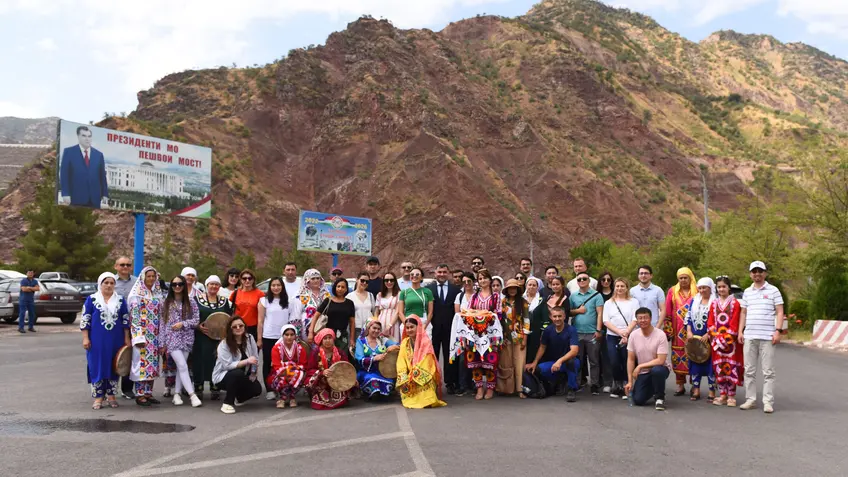Tajikistan: Advancing Inclusive Climate Action in Central Asia and the Caucasus
With Baku, Azerbaijan, set to host COP29 later this year, climate action in Central Asia and the Caucasus will be firmly in the spotlight. The COP29 presidency has already signaled its intent to build on the outcomes from the Global Stocktake.
Organizers will likely be looking to build on recent regional events, such as last year’s Climate Finance Forum for Central Asia and South Caucasus in Tajikistan that was coordinated by the NDC Partnership and the United Nations Framework Convention on Climate Change (UNFCCC).
The forum hosted a collection of over 130 representatives from development partners, the private sector, multilateral development banks and multilateral climate funds. Alongside critical finance gaps, participants specifically identified collaborative pathways and critical barriers to the implementation of NDC targets, including the need for:
- Stronger coordination among ministries and stakeholders,
- Better Monitoring, Reporting, and Verification (MRV) systems,
- Enhanced institutional capacity to implement climate plans and NDCs, and
- More inclusive participation through whole-of-society climate action.
Tajikistan, the Forum host and an NDC Partnership member, has emerged as a standout climate leader in the region. Being a landlocked developing country with intricate mountainous terrain, Tajikistan faces growing vulnerability to climate change due to increasing natural disasters and an economy that heavily relies on natural resources and agriculture.
Recognizing this, the government, through the Committee for Environmental Protection (CEP), has been actively developing robust policy frameworks and an enabling environment to increase stakeholder engagement and climate investments. In 2022, with support from USAID and NDC Partnership, Tajikistan established the NDC Secretariat (NDCS) to strengthen the Government’s capacity in coordinating line agencies and international support for NDC implementation. In 2023, the CEP launched the NDC Implementation Plan and NDC Finance Plan as interlinking tools to increase flows of finance and investments to drive NDC implementation and support the ongoing scaling up of climate action.
These plans will operationalize Tajikistan’s updated NDC of 2021, which sets an unconditional emissions-reduction target of 30-40%, and a conditional target of 40-50% by 2030, as compared to 1990 levels.
Developed with support from the UNDP, the NDC Implementation Plan outlines nearly 100 actions spanning sectors such as energy, industry, agriculture, forestry, land use and waste management. These actions aim to contribute to the country’s ambitious targets for emissions-reductions while improving the resilience of local communities already feeling the impact of climate change in their region.
One notable example is the Tebalay River watershed area, home to more than 300,000 people, where extreme nationwide floods in 2021 tragically led to loss of life and significant infrastructure damage. Local authorities, through direct support from the UNDP, have since been working to lessen the effects of flash floods, landslides and mudflows on local infrastructure, ecosystems and agriculture.
This work in the Tebalay area aims to increase overall resilience by coordinating human activities and natural resource management across all sectors, fully considering interlinking environmental, social and economic factors.
Though there is strong national and local ownership, international technical and financial support is still crucial for Tajikistan to realize such projects, as well as reach the goals laid out in their NDCs. Tajikistan’s NDC Finance Plan, developed through assistance from the Asian Development Bank (ADB), an NDC Partnership member, aims to identify, mobilize, assess and scale up international climate finance to support Tajikistan's ambitious targets. This is estimated to require a significant portion, roughly 7%, of Tajikistan’s total Gross Domestic Product (GDP).
Tajikistan's NDCs plans are expected to provide guiding frameworks for achieving national climate mitigation and adaptation goals, offering recommendations to enhance the enabling environment for climate investments.
The NDC Climate Finance Plan provides a comprehensive strategy for the Government of the Republic of Tajikistan to mobilize resources from various channels. It serves as a guide for coordinating different stakeholders and pinpointing areas where support can be provided, ultimately enhancing Tajikistan's finance sector capacity to facilitate sustainable financing for climate or green investments.
As the region gears up for COP29 later this year, the Republic of Tajikistan, despite being a lower-middle income and a low-emitting developing country, has increased its climate profile and is leading by example in its efforts to achieve the goals of the Paris Agreement.
"The Republic of Tajikistan hopes that developed countries, United Nations structures, international and regional organizations and influential financial institutions will continue to cooperate in the implementation of the Climate Finance Plan for the implementation of Tajikistan's NDCs.", said Mr. Mavlodod Abdulkodir, CEP Deputy Chairman.
Read the full interactive version of this story and more in the Partnership in Action 2023.
